Goulburn’s current Wastewater Treatment Plant was commissioned in 2018. This receives Goulburn’s sewage through Council’s reticulated sewer network. Prior to the wastewater treatment process, sewage leaves properties, makes its way through gravity fed mains and various pump stations to the Goulburn Wastewater Treatment Plant. From here the stages of wastewater treatment includes preliminary, primary, secondary and tertiary.
Preliminary
The preliminary stage involves inorganic solids and other large objects being separated out of wastewater. This is completed through a step screen and bache classifier/drum screens which the wastewater flows through and filters out these items.
Primary
The primary stage involves the separation of settable organics solids and floatables from the wastewater and the treatment and disposal of these solids. This is completed in the bioreactor through an anoxic zone, which deprives the wastewater from oxygen to simulate microorganism growth. Oxygen is then re-introduced by the use of blowers and diffusion grids, this causes a new form of microorganism to grow that consumes the original microorganisms. This is all completed for biological nutrient removal.
Secondary
The secondary stage involves the wastewater passing through specifically engineer designed membranes which pulls the effluent out of the mixed liquor. The membranes are designed to only pull water out as they are an extremely fine screen, small enough to only allow water through and prevent solids as well as bacteria from entering the treated effluent. Any mixed liquor that is not treated in this process returns to the bioreactor to begin the process again.
Tertiary
The tertiary stage involves treating effluent through the use of UV lamps and chlorine dosing. Once the effluent has been pulled through the membranes it is transferred to the UV system to be treated, this is a precautionary to make sure that any bacteria still remaining in the effluent is neutralised. The majority of the effluent is then discharged through Council’s approved discharge point into the Wollondilly River. A small amount is transferred to be reused for wash down water for the plant, this is treated with chlorine for further disinfection. Currently effluent from this plant is being used to irrigate the Racetrack and Cookbundoon Sporting Fields.
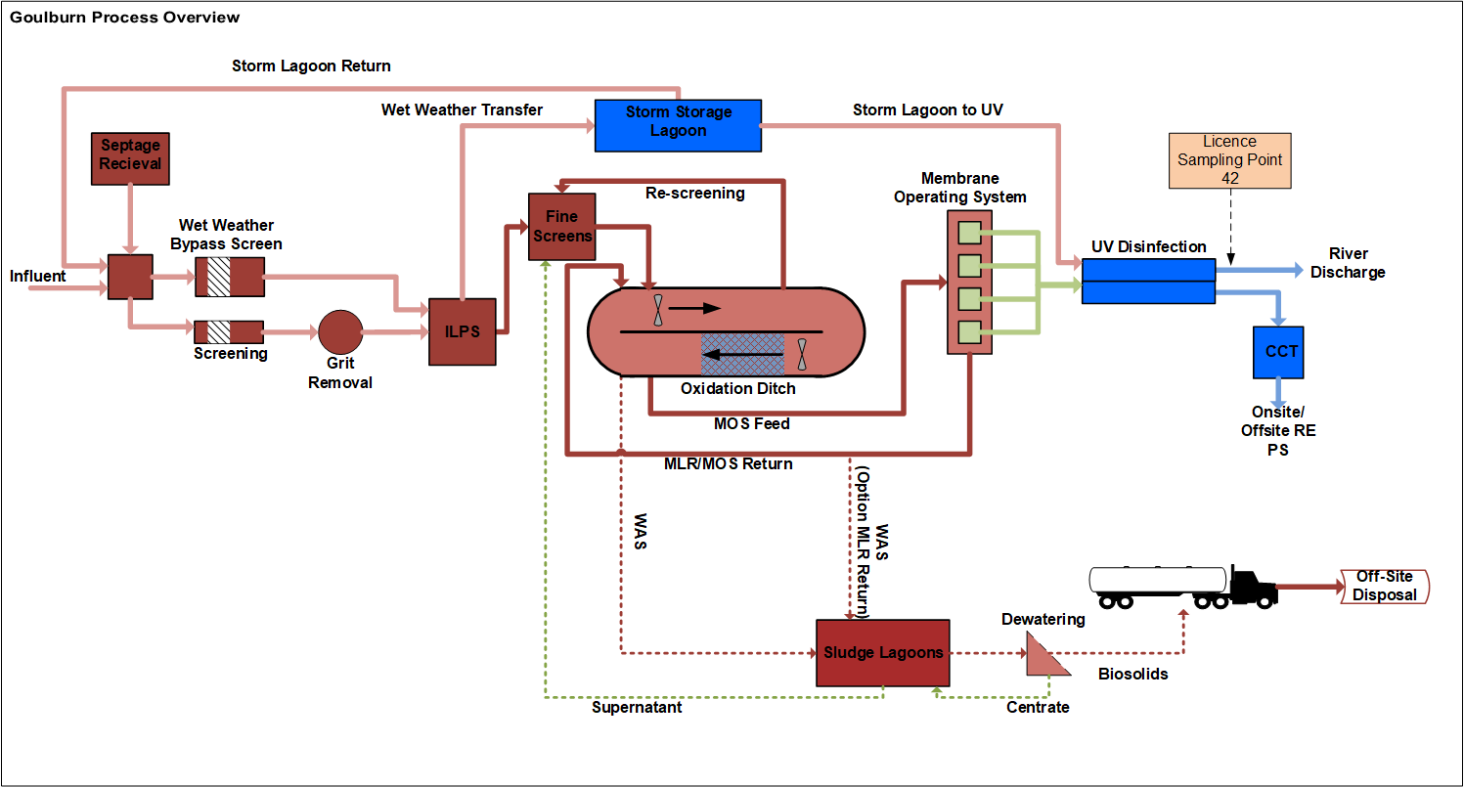
Goulburn Mulwaree Councils sewerage infrastructure consists of series of gravity sewer mains, pumping stations and rising mains that distribute sewerage for treatment in both Goulburn and Marulan. To provide the ongoing quality of Goulburn Mulwaree Council's infrastructure Council networks staff and experienced contractors maintain and upgrade the networks with yearly works and capital programs.
Goulburn Wastewater Network
The existing Goulburn wastewater network has sixteen Council owned sewer pumping stations, and approximately two hundred and eighty kilometres of trunk, reticulation, and approximately nine kilometres of rising mains that are conveyed to the Goulburn Waste Water Treatment Plant.
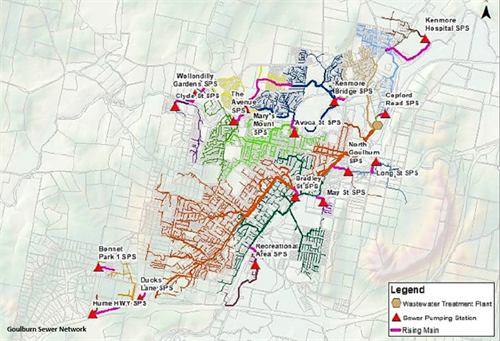
Marulan Wastewater Network
The Marulan wastewater network consists of a series of gravity sewer mains, pumping stations and rising mains which ultimately convey flows to the Marulan Waste Water Treatment Plant. The system first started with a common effluent drainage system that collected wastewater from the existing onsite sewer to pump to the Waste Water Treatment Plant. Infill developments are connected to the Common Effluent System. The Marulan wastewater network has eight Council owned sewer pump stations, with the Maclura Drive and Brayton Road Sewer Pump Stations feeding into a common rising main. Flows are conveyed to the Waste Water Treatment Plant via approximately eighteen kilometres of gravity and reticulation main, along with approximately seven kilometres of rising main.
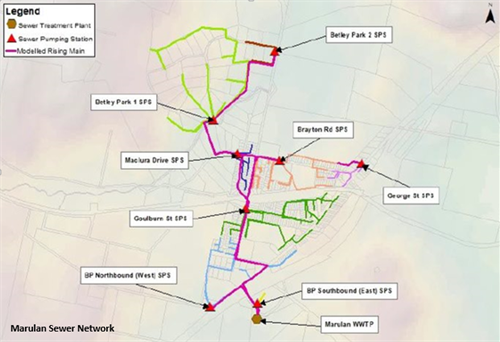
Most residential properties are connected to Council's sewer system via a single junction into each lot. The connections have identified points for access, inspection, repairs and surcharge (overflow). The following information and advice is provided to assist owners to evaluate sewer problems and reduce surface water inflow and groundwater infiltration into Council's Sewer.
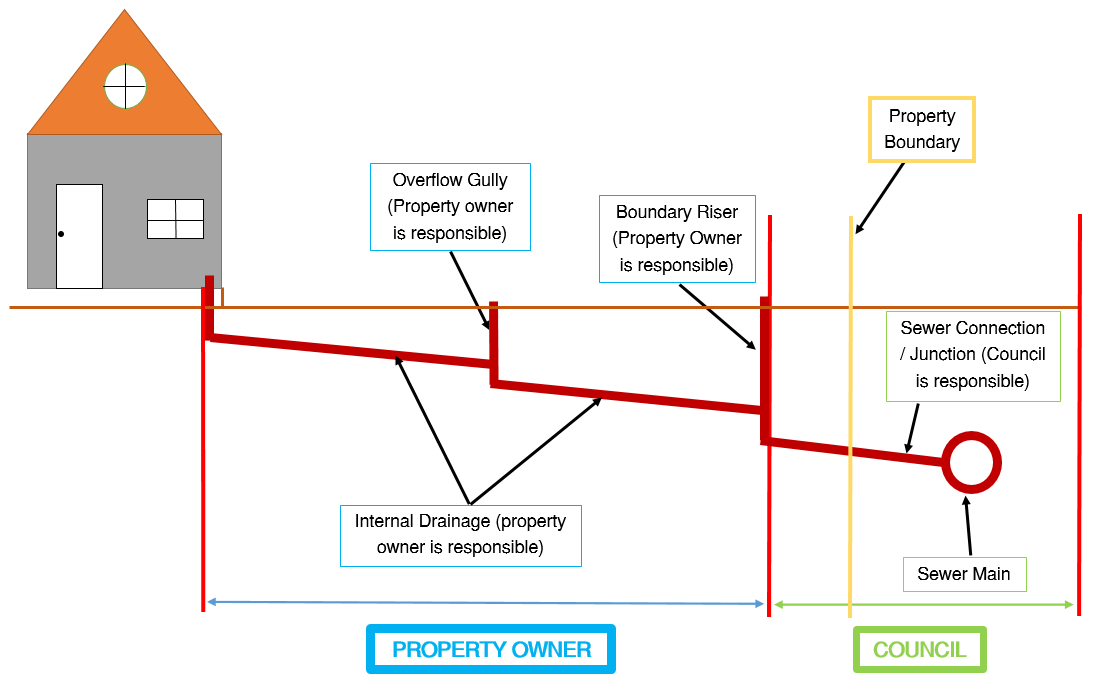
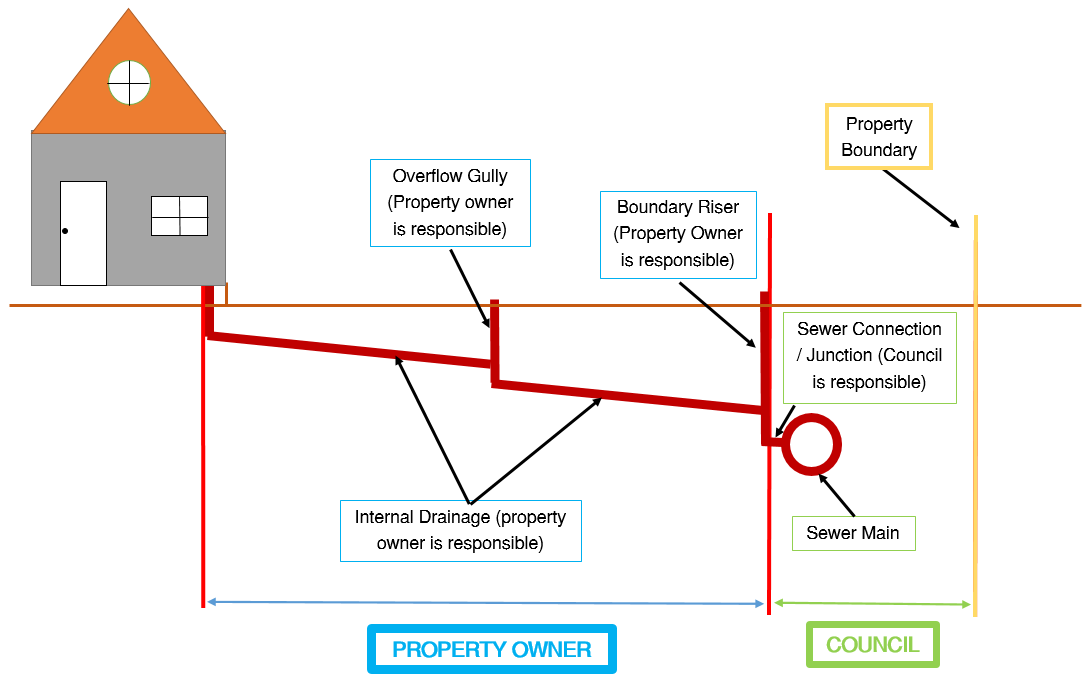
Internal House Drainage
Internal house drainage includes all internal sewer drains throughout the premises that gravitate down to the inspection shaft. Owners are responsible for repair and maintenance of internal house drainage.
Overflow Gully
The overflow gully is usually an external point with a loose grated lid to allow sewerage to surcharge (overflow) if a blockage or significant wet weather occurs. The top of the overflow gully should be a minimum of 50mm above ground level and 150mm below the floor level of the house. It is important that this pipe is not buried or covered, to ensure that any backed up sewerage can escape through the overflow gully instead of the house. Owners are responsible for maintaining and repairing the overflow gully.
Inspection Shaft/Boundary Riser
Inspection shafts/boundary risers are important in the sewer line. They are normally identified by a flat PVC or cast iron round disk (refer to photos below) approximately 180mm in diameter normally with a concrete surround to protect it from damage. Some of the inspection shafts/boundary risers in older areas within Goulburn Mulwaree may be buried. They are located on your property, normally near the property boundary (about one metre inside the boundary) adjacent to Council’s sewer main. Owners are responsible for maintaining and repairing the inspection shaft/boundary riser.
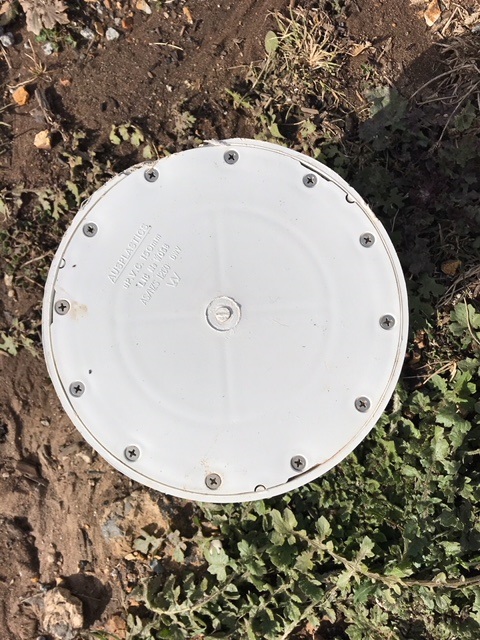
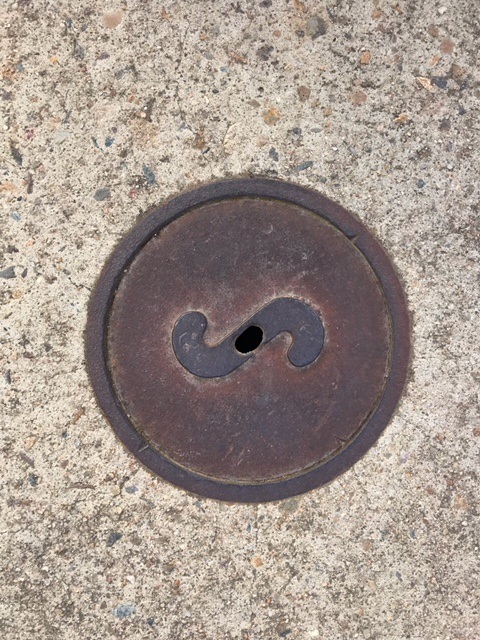
Responsibilities
All property owners should be aware that where inspection shafts remain on private property; replacement and maintenance remain the responsibility of the owner or proprietor.
If a sewer blockage occurs at a property, carefully remove the lid of the shaft and inspect. If the shaft is empty, then the blockage has occurred in the property and the owner will need to organise a Licensed Plumber to clear the blockage, at the Owner’s expense. If however the boundary shaft is partly or completely full, the blockage is likely in the sewer connection/junction or sewer main and will need to be rectified by Council. Council can be contacted on (02) 4423 4444 during office hours, or (02) 4822 1080 after hours.
Second Risers
Some properties in town have a ‘stepped’ riser or ‘second’ riser in cases where sewer mains were installed on deep sewer mains. The diagrams below show the responsibility of Council and the property owner in regards to these types of risers.
Sewer Main located in the road reserve;
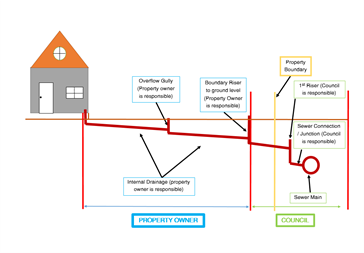
Sewer Main located in your property;
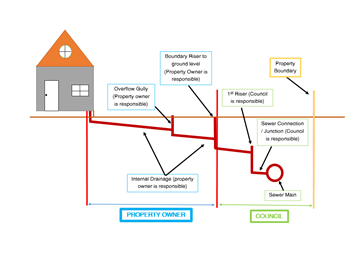
Stormwater into Council's Sewer System
Stormwater includes water collected from roofs, gutters, downpipes, driveways, lawns and any surface water resulting from rainfall. The discharge of stormwater into Council's Sewerage System is illegal. Council does have methods for detection of illegal connections and discharges. Periodic surveys are completed by Goulburn Mulwaree Council to identify illegal discharges to sewer. Household owners are required to rectify defects and any failure to comply may lead to a penalty of up to $2200 as per section 638 of the Local Government Act and cost recovery to undertake defect repairs.